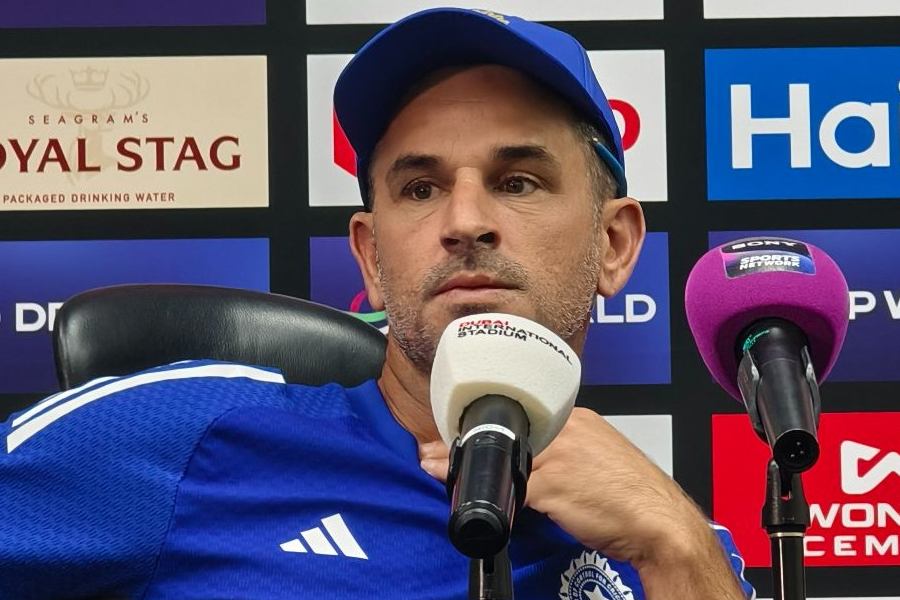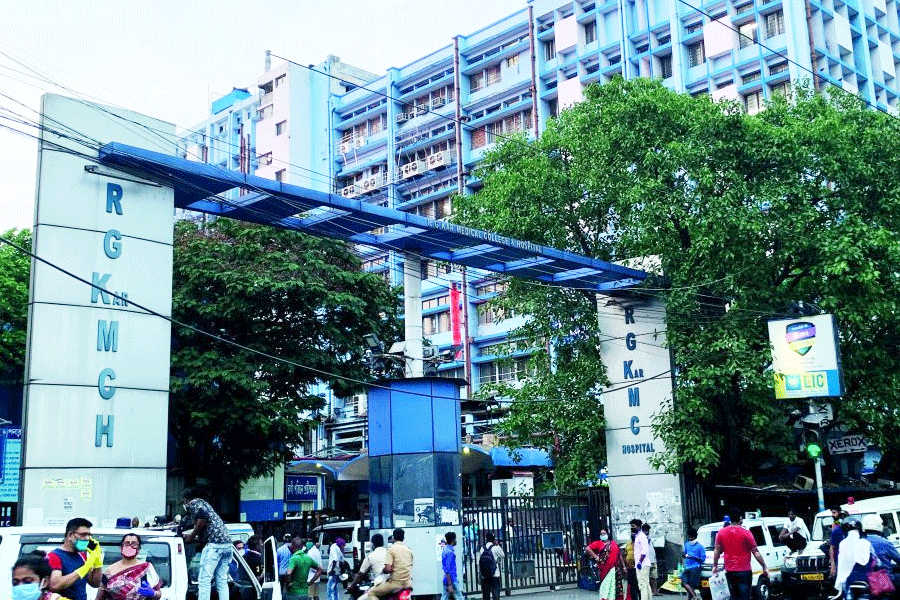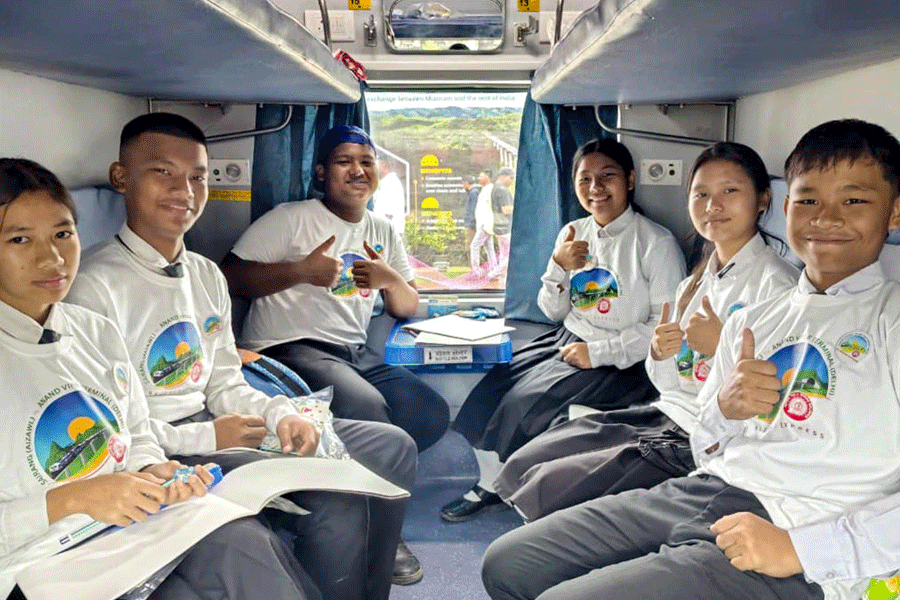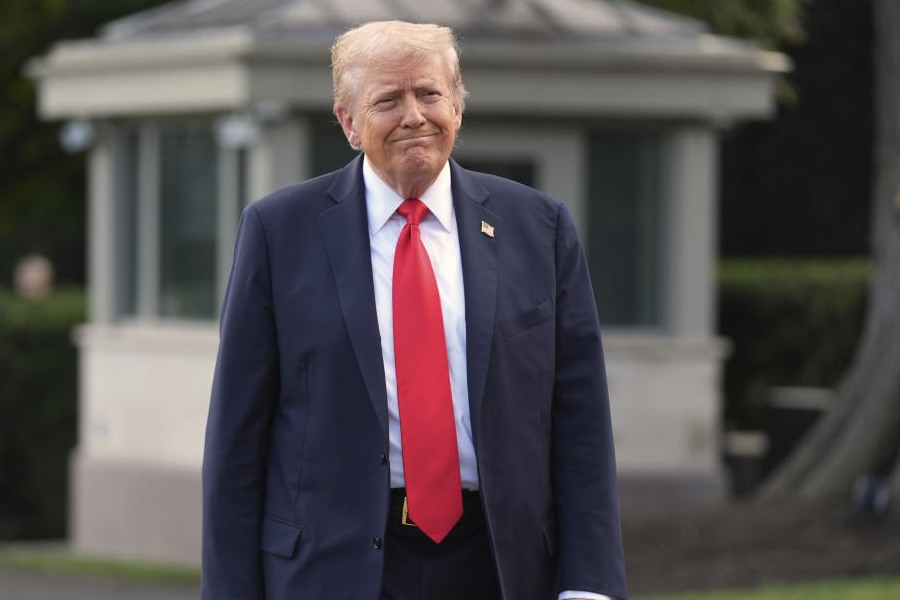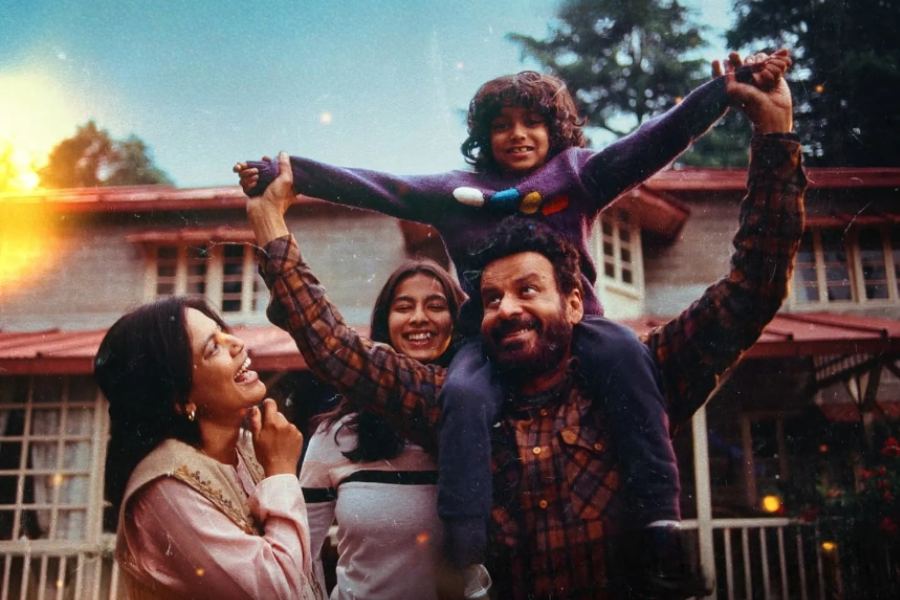 |
| Everlasting journey: Vasundhara Komkali (left) and Kalapini (Picture by Shambhu Hazra) |
It is what you can’t say anymore about yourself in vilambit khayal that you seek to say in the medium and fast tempos, and it is what you are forced to leave out in the madhya laya khayal that you try to say in the tarana. It’s in the thumri that you say all those things that you could never say in any of the other forms of compositions. It’s the final call of your being in which the thumri becomes lethal art form and calls you from your very vestiges,” Pandit Kumar Gandharva once observed.
To be able to say all, he had evolved a style that was a heady blend of the characteristics of Gwalior gharana and folk music. Vasundhara Komkali, his wife and his support system for years both in his life and moreover on stage, proved his point on March 12 at the pre-Holi musical celebration Saras Vasante organised by the ITC SRA at its aesthetically decked up open air stage in its lush green lawns.
Ably supported by her daughter Kalapini and grandson Bhuvanesh (son of Mukul Shivputra), the veteran vocalist presented some raga-based compositions of Kumar Gandharva in Bahar, Bhimpalasi, Basant, Shuddh Desi, Bageshri, etc that leaned towards the lilting folk of Malwa region of Madhya Pradesh. Thus the everlasting journey of raga, which originated from the folk, traversed back to its source with vigour that became as contagious as the colourful mood of Holi.
Preceded by well-structured aochars, the compositions sparkled with clear enunciation, imaginative bol-banav and sharp taans which were snugly studded within the cycles of varied taals like rupak, deepchandi, chanchar, jat, dadra, kaharwa and teental. The sheer delight of the traditional Rasiya and Malawi Kafi-Hori was further enhanced by the lively dholak and tabla of Rajendra Durkar and Sanjay Deshpande respectively. Chaitanya Kunthe’s harmonium was very supportive.
Both the mother and the daughter have deep, robust and yet flexible voices, while Bhuvanesh has the typical high-pitched honeyed tone like his grandfather. The trio adjusted their pitch beautifully by singing in middle and higher octaves concurrently.
Earlier, Dr Raj Khushiram and his pakhawaj recited superbly composed lyrics in chautal with admirable skill. The traditional tihai, gat, rela belonging to Nana Panse and Avadhi gharanas were based on bols like gadigina, dhumakit, na-na-na-na etc. One such rela with layakari ended with a long tihai consisting of triple dha. The powerful kran-based composition was in contrast with the soft thun-based one. Guruvandana, Dwadash Ganesh and Bhadrakali, his self-composed parans, used these variant bols to express the lyrics as well as their veiled connotations.
Following the tradition of the Academy, the evening commenced with the group renderings of the present batch of scholars. But this year khayals steeped in spring’s romantic mood replaced the traditional Hori-dhamars.
Directed by Ustads Mashkoor and Mubarak Ali Khan and accompanied by Sandeep Roy Chowdhury on the tabla and Rupashri Bhattacharya on the harmonium, the scholars sang bandishes in Basant, Bahar and Khamaj Bahar with refreshing clarity. All the three compositions were set to medium-fast teental.


